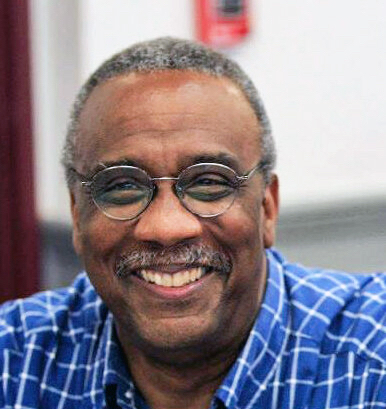As humanity hurtles inexorably toward a steady-state, no-growth economy, whether by choice or the imperatives of climate collapse, the idea of sharing electricity on a global scale is becoming more relevant than ever. Such an infrastructure would deliver huge benefits. It would spur adoption of renewable energy and reduce carbon emissions while making the world's power systems more flexible and resilient.
The systems thinker and maverick architect Buckminster Fuller first proposed the World Grid idea in the 1970s. While the idea was daringly futuristic then, it garnered some serious attention. When the World Grid concept was presented by Canadian prime minister Pierre Trudeau to then-USSR premier Leonid Brezhnev, Soviet technical experts concluded that the concept was "feasible" and "desireable."
 The point of a world electrical grid is to re-engineer hub-and-spoke transmission networks designed for central power plants so that electricity can be easily transmitted between daytime to nighttime regions of the world, and between the Global North and South. The infrastructure would make it more feasible for countries to rely on renewable energy because the grid would solve the problem of intermittent energy flows (no solar energy can be generated at nighttime; the wind is not always blowing).
The point of a world electrical grid is to re-engineer hub-and-spoke transmission networks designed for central power plants so that electricity can be easily transmitted between daytime to nighttime regions of the world, and between the Global North and South. The infrastructure would make it more feasible for countries to rely on renewable energy because the grid would solve the problem of intermittent energy flows (no solar energy can be generated at nighttime; the wind is not always blowing).
For years, Greg Watson, Director of Policy and Systems Design at the Schumacher Center for a New Economics, has been leading an effort to integrate the world's electricity production and distribution into a single network of networks. The World Grid's design would loosely resemble the design of the Internet, whose standard protocols enable different types of networks to interconnect and share on a global scale.
A free flow of electricity across national boundaries would allow nations to acquire electricity at lower costs, most notably by moving from expensive, atmosphere-destroying carbon energy sources to renewables. The benefits from the vast savings on a global scale could be mutualized through a standard (lower) world price. The Grid would also greatly reduce the need for storage capacity and make the entire electricity-delivery system more flexible and resilient.
To explore the history of the World Grid idea and Buckminster Fuller's wide-ranging influence on systemic solutions, Greg Watson spoke with me on my podcast, Frontiers of Commoning (Episode #31).
Watson's push for a World Grid is a logical outgrowth of his long, pioneering work in sustainable agriculture, renewable energy, and community development. He was formerly the Massachusetts Commissioner of Agriculture under three governors; the first Director of the Massachusetts Renewable Energy Trust, which develops offshore wind energy; and the head of the Dudley Street Neighborhood Initiative, a grassroots community land trust that converted 1,300 abandoned lots in Roxbury, Massachusetts, into a healthy, affordable neighborhood.
Watson often talks about the "Energy Trilemma" that we face – how to "simultaneously optimize sustainability, energy equity and energy security." He argues that a World Grid could address all three optimally: "It could tap the global solar, wind and water renewable energy resources and take full advantage of their geographic, seasonal, and night-day complementarity. In the process it could turn what has been considered a liability—i.e., the intermittency of renewable energy generation—into an asset, making the goal of a secure 100% renewable energy system accessible to all a realizable one."

Watson's work as Executive Director of the New Alchemy Institute in the 1980s was a springboard into his current line of advocacy. For twenty years, until 1991, the Institute was a hotbed of bold eco-experimentation and systems thinking – a "new age mecca," as the New York Times Magazine called it. It was a testing ground for organic agriculture, sailwing windmills, solar algae ponds stocked with fish, and of course, geodesic domes.
It was at the Institute that Watson encountered a related project that Buckminster Fuller had proposed, the "World Game." This game-like workshop process is designed to help nations think more systematically and practically about global problems, and to develop cooperative solutions.
To help participants understand the inescapable global interdependencies facing humanity, Fuller developed what he called the "Dymaxion Project" – a map that visualizes the entire planet without the geographic distortions of conventional Mercator-projection maps. As Watson has said, "The one-island perspective is obscured by conventional map projections. The resource and energy flows that fuel the Earth’s resiliency are severely limited by the world’s 195 nation-state boundaries that Bucky likened to blood clots."
The Dymaxion map, by contrast, promotes an understanding of global cohesion: "It does not follow the North-up convention. Neither does it follow any South-up, East-up nor West-up—there is no right way up….Perhaps most important regarding the current climate crisis, is the Dymaxion revelation of a 'one island, one ocean planet.' The unfettered flows and recycling of resources make possible synergetic, emergent, regenerative energy interpatternings that are a primary source of Earth’s resilience.
You can listen to my full podcast interview with Greg Watson here.










Recent comments